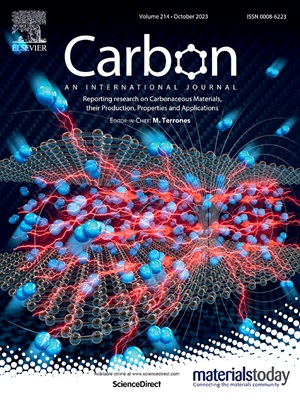Zinc-mediated activator crafting of single-atomic Mn–N2|Zn–N6 sites and nanoclusters within microporous carbon networks for efficient oxygen reduction
IF 11.6
2区 材料科学
Q1 CHEMISTRY, PHYSICAL
引用次数: 0
Abstract
Metal-organic frameworks (MOFs) serve as superior precursors for porous carbon electrocatalysts due to tailorable coordination environments and structural adaptability. However, pyrolysis-induced structural degradation causes metallic aggregation and pore disorder, severely impairing oxygen reduction reaction (ORR) kinetics. We develop a confined ZnCl2 etching strategy to convert metal triazolate frameworks into microporous-dominated ZnMn–N–C catalysts, exposing active sites at triple-phase interfaces. Molten ZnCl2 simultaneously engineers microporores and suppresses metal coalescence, yielding atomically dispersed Mn–N2|Zn–N6 moieties. The optimized catalyst achieves a 0.867 V half-wave potential (vs. RHE) in an alkaline media. In zinc-air batteries, it delivers 889 mWh g−1Zn at 50 mA cm−2 with 49 mV day over 150 h, while maintaining a <0.87 V charge-discharge gap at 10 mA cm−2 for over 100 h. This work provides a rational strategy for spatially optimizing active sites via confined chemical etching, demonstrating significant potential for developing durable zinc-air batteries with enhanced reaction kinetics.

锌介导的激活剂制备单原子Mn-N2 | Zn-N6位点和微孔碳网络内的纳米团簇,用于有效的氧还原
金属有机骨架(MOFs)具有良好的配位环境和结构适应性,是多孔碳电催化剂的优良前驱体。然而,热解引起的结构降解会导致金属聚集和孔隙紊乱,严重损害氧还原反应动力学。我们开发了一种受限的ZnCl2蚀刻策略,将金属三唑盐框架转化为微孔为主的ZnMn-N-C催化剂,暴露了三相界面上的活性位点。熔融ZnCl2同时工程微孔和抑制金属聚结,产生原子分散的Mn-N2 | Zn-N6基团。优化后的催化剂在碱性介质中达到了0.867 V半波电位(相对于RHE)。在锌-空气电池中,它在50 mA cm - 2条件下以49 mV /天的速度提供889 mWh g - 1Zn,超过150小时,同时在10 mA cm - 2条件下保持0.87 V的充放电间隙超过100小时。这项工作为通过受限化学蚀刻优化活性位点提供了一种合理的策略,展示了开发具有增强反应动力学的耐用锌-空气电池的巨大潜力。
本文章由计算机程序翻译,如有差异,请以英文原文为准。
求助全文
约1分钟内获得全文
求助全文
来源期刊

Carbon
工程技术-材料科学:综合
CiteScore
20.80
自引率
7.30%
发文量
0
审稿时长
23 days
期刊介绍:
The journal Carbon is an international multidisciplinary forum for communicating scientific advances in the field of carbon materials. It reports new findings related to the formation, structure, properties, behaviors, and technological applications of carbons. Carbons are a broad class of ordered or disordered solid phases composed primarily of elemental carbon, including but not limited to carbon black, carbon fibers and filaments, carbon nanotubes, diamond and diamond-like carbon, fullerenes, glassy carbon, graphite, graphene, graphene-oxide, porous carbons, pyrolytic carbon, and other sp2 and non-sp2 hybridized carbon systems. Carbon is the companion title to the open access journal Carbon Trends. Relevant application areas for carbon materials include biology and medicine, catalysis, electronic, optoelectronic, spintronic, high-frequency, and photonic devices, energy storage and conversion systems, environmental applications and water treatment, smart materials and systems, and structural and thermal applications.
 求助内容:
求助内容: 应助结果提醒方式:
应助结果提醒方式:


